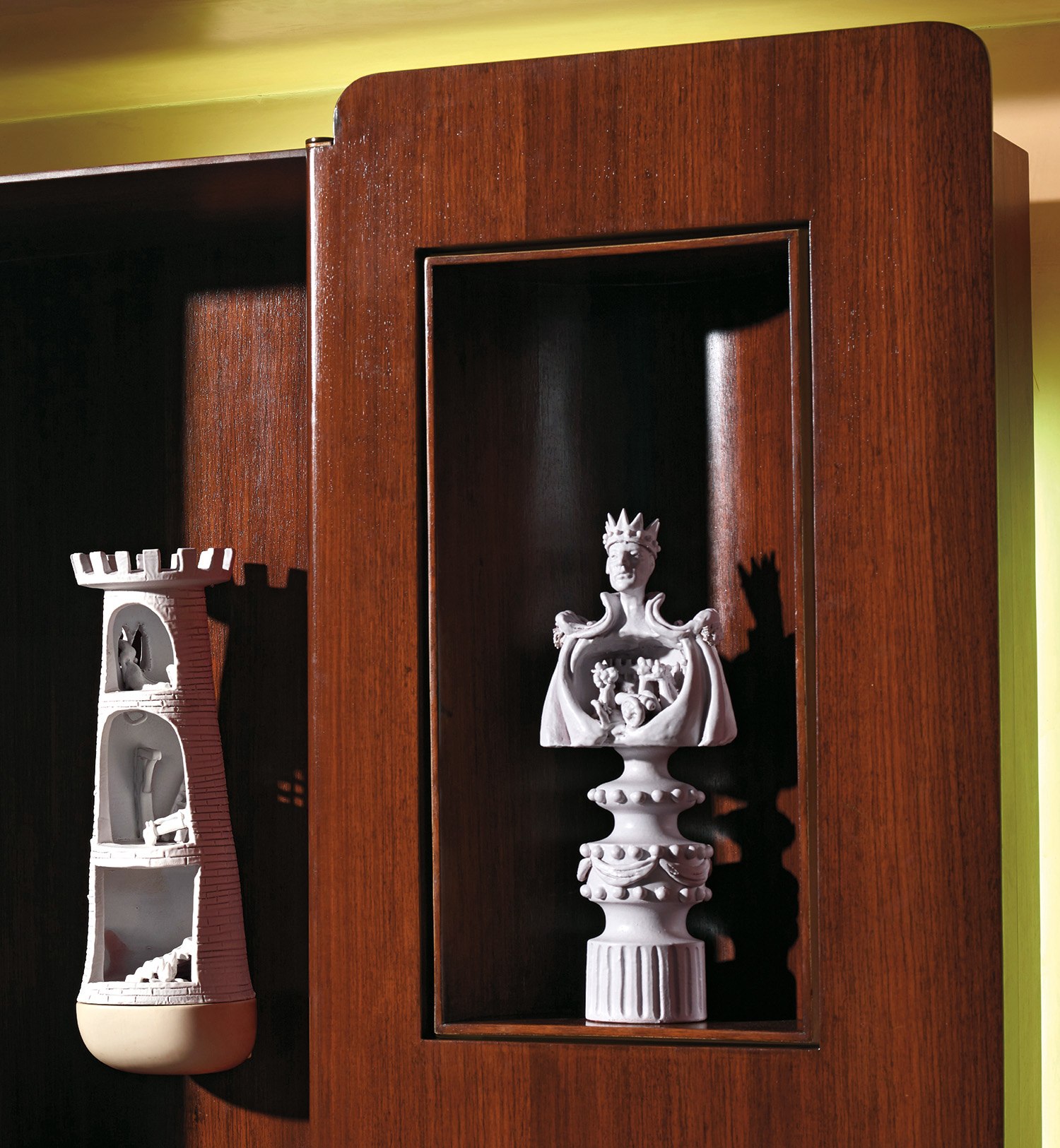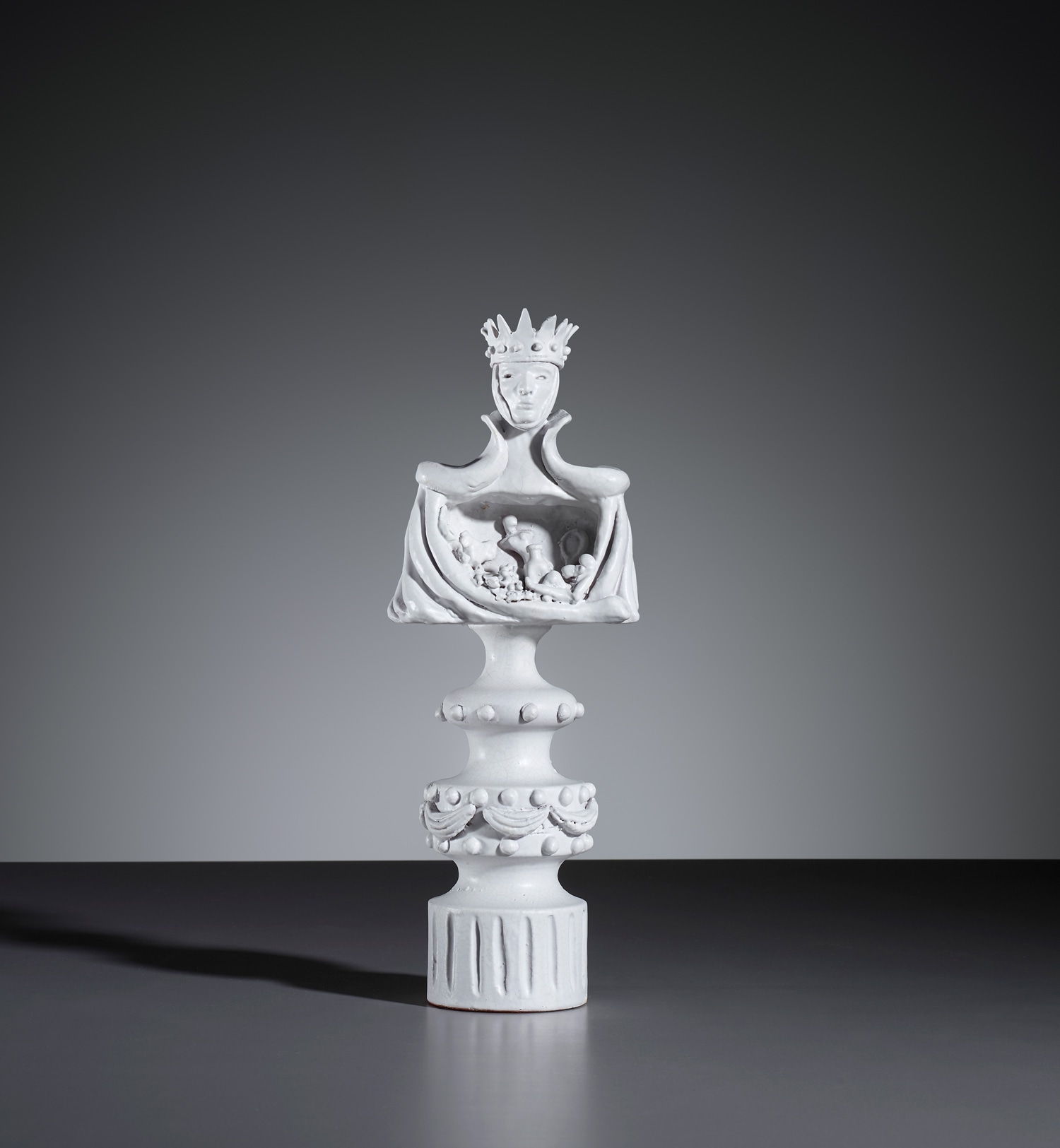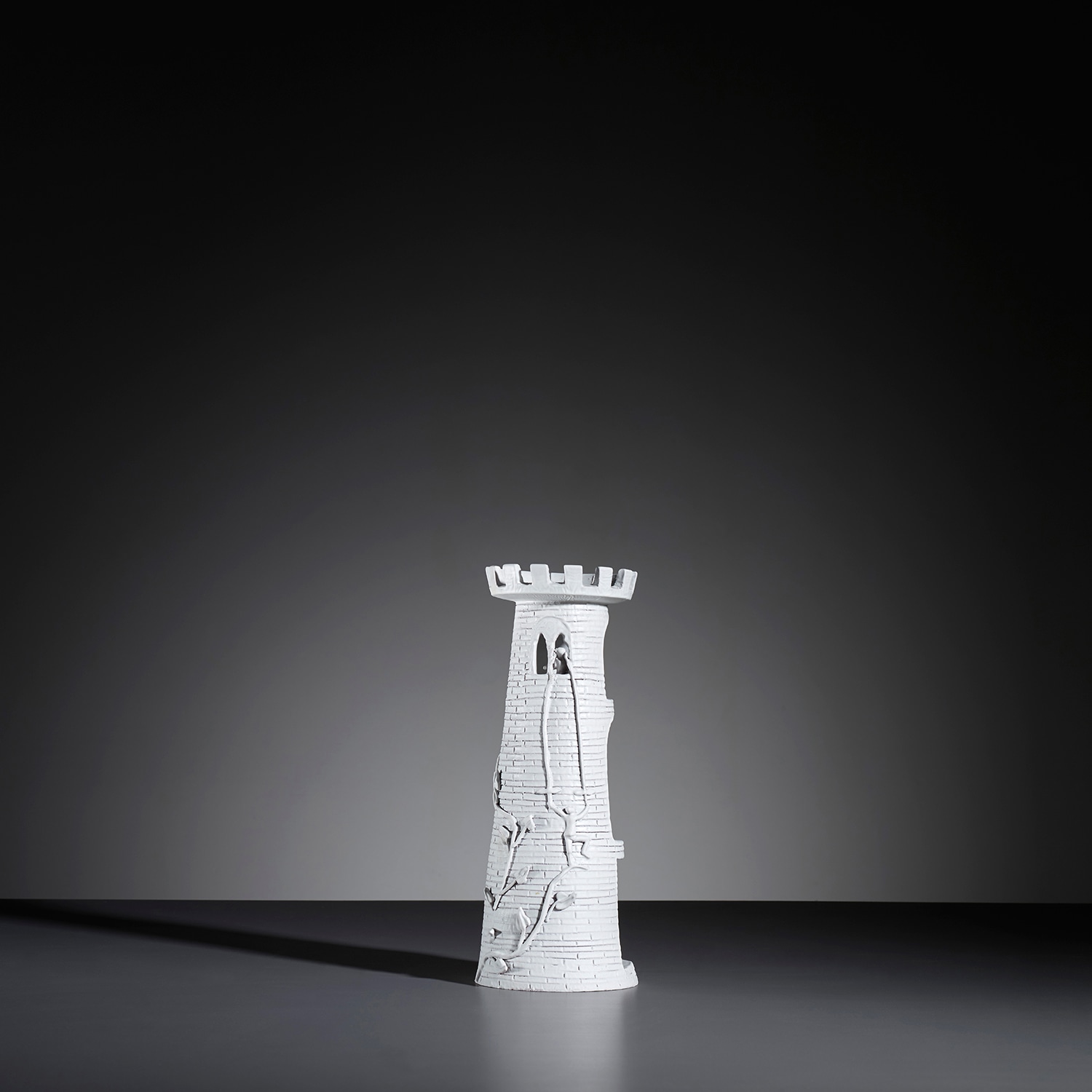







301Σ
Gio Ponti
Illuminated 'Positivo-negativo' wall-mounted cabinet with tower and queen statuettes
Tower: 33.1 x 13 x 13.2 cm (13 x 5 1/8 x 5 1/4 in.)
Queen: 34.5 x 12.6 x 9.2 cm (13 5/8 x 4 7/8 x 3 5/8 in.)
Full-Cataloguing
Ponti’s Casa Lucano
An Acrobatic Experiment between Surfaces and Volumes
I am very familiar with this project by my grandfather Gio Ponti and I am pleased to write something about it as the memory of it brings me back to many years ago, when I was a young photographer and I visited the apartment to take some pictures. Even though the apartment at that time was already missing some of its original wonders, its charm remained intact.
As Ponti had acknowledged in his Domus article featuring the Lucano apartment, we must go back to 1950, the date which marks the beginning of the chapter of Ponti’s career ‘Passion for Fornasetti’. This passion, like all passions, was short and very intense, resulting in many projects, including Casa Cremaschi, Casa Ceccato, Casa Licitra with a wardrobe, the casino of San Remo, the ocean liners Oceania, Conte Grande and Giulio Cesare, the Vembi Borroughs offices and the Dulciora shop in Milan. In the early 1950s, Ponti found in the work of Piero Fornasetti the ideal instrument to achieve a systematic dematerialisation of volumes and, returning to Casa Lucano, the creation of a theatrical ‘Casa di fantasia’ (fantasy house), as he titled it in his Domus article.
There are two fundamental aspects to consider in the understanding of this work by Ponti: the use of space as an expression of theatrical versatility and the use of surfaces as an expression of 'illusiveness’, considered by Ponti as an indispensable approach to architecture. In the plan for the Lucano apartment we already find the fundamentals of what will be the programmatic approach of Ponti’s own apartment at via Dezza, Milan, designed in 1957.
Namely, the projects feature a unique and versatile space with a succession of ‘infilate ottiche’ (lines of vision) revealed through the various rooms. It is a sort of stage presenting the lives of its 'inhabitants', who animate it and complete its various functions. This reversal, that assigns inhabitants the role to determine the functional destiny of the spaces rather than constructing fixed spatial and functional structures, is a central theme of Ponti’s post-war work.
The second important aspect explored in the Lucano apartment is the idea of illusiveness, which within this context is the role of decoration in articulating the perception of space. The visual effect of the burr walnut-veneered walls composed ‘alla Ponti’ and paired with Fornasetti’s printed panels create a dematerialization of the volumes. To reference the words of Ponti, ‘What gives me Fornasetti? With a process of speed and prodigious resources, he creates the possibility of having ‘unique’ things ... and the effect of lightness and poetry through his printed decoration’.
Finally, in true Ponti style, we must not forget the clients of this commission, who gave him the opportunity to design this ‘Casa di fantasia’. Ponti writes: ‘the courteous clients liked it as it is, this ‘fantasy’ was to be realised for their magnificence to its most extreme, with an attitude of both patrons and partners…’.
Salvatore Licitra
Founder and Curator, Gio Ponti Archives
Gio Ponti
Italian | B. 1891 D. 1979Among the most prolific talents to grace twentieth-century design, Gio Ponti defied categorization. Though trained as an architect, he made major contributions to the decorative arts, designing in such disparate materials as ceramics, glass, wood and metal. A gale force of interdisciplinary creativity, Ponti embraced new materials like plastic and aluminum but employed traditional materials such as marble and wood in original, unconventional ways.
In the industrial realm, he designed buildings, cars, machinery and appliances — notably, the La Cornuta espresso machine for La Pavoni — and founded the ADI (Industrial Designer Association). Among the most special works by Gio Ponti are those that he made in collaboration with master craftsmen such as the cabinetmaker Giordano Chiesa, the illustrator Piero Fornasetti and the enamellist Paolo de Poli.